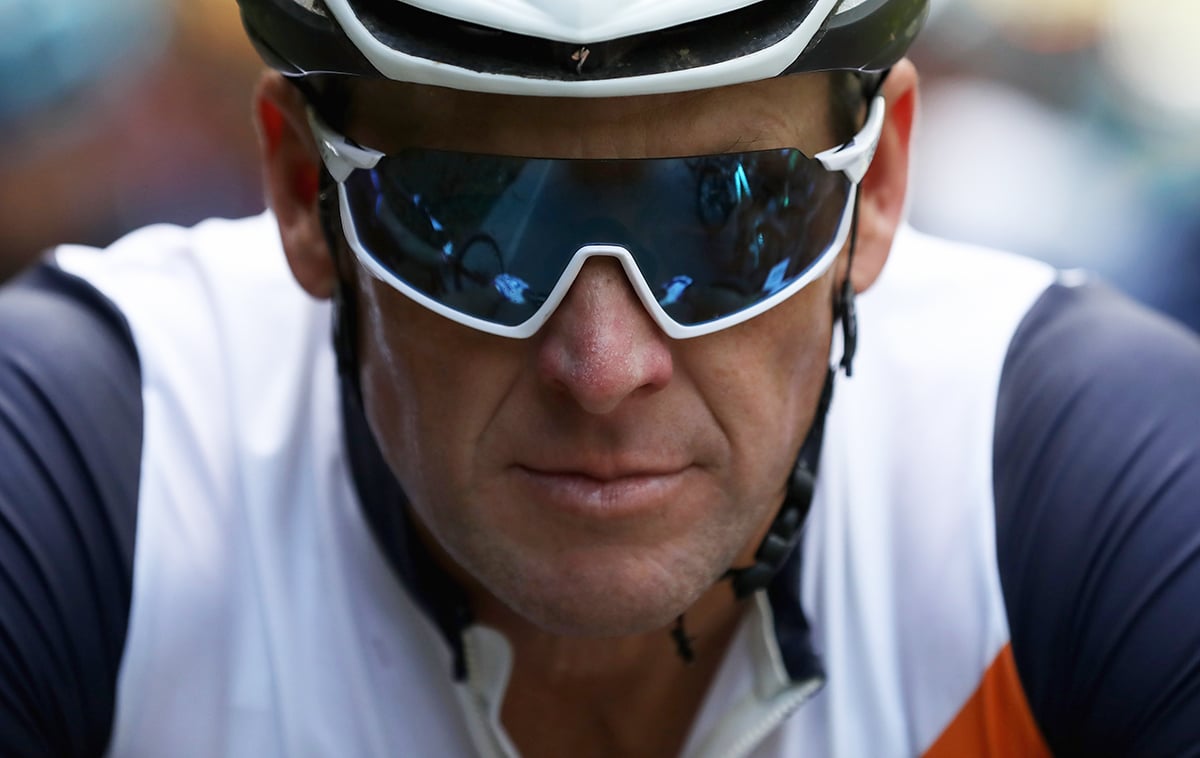Understanding Testicular Cancer
- Cycling star and cancer survivor Lance Armstrong has overcome a great deal of adversity in his life, including cancer and a doping scandal.
- Testicular cancer is not commons; about 1 of every 250 males will develop testicular cancer at some point during their lifetime.
- According to the National Library of Medicine, "athletes should be made aware that long-term treatment with doping agents might increase the risk of developing cancer."
He recently celebrated his 50th birthday, an incredible milestone for anyone, but especially for someone who's overcome the challenges that Armstrong has. After years of denying his doping use, he finally admitted to it in 2013, further saying that he thinks it may have caused his cancer.
Read MoreLance Armstrong's Cancer Diagnosis
Armstrong is a record-setter. In 1996, he became the first American to win the La Flèche Wallonne, a men's professional cycle road race in Belgium, and won his second Tour DuPont, a cycling stage race in the United States held annually between 1989 and 1996, according to ESPN.
He had previously won stages of the Tour de France, a men's professional cycling event widely considered to be the biggest sporting event in the world. But that same year, even though he only competed for five days of the competition, he went on to participate in the 1996 Olympic Games in Atlanta. There, he finished sixth in the time trial competition and 12th overall in the road race.
He was on top of the cycling world.
Related: 5 Important Facts About Testicular Cancer, Including How to Screen for the Disease
But his world seemingly came crashing down around him in October 1996 when the young star cyclist was diagnosed with advanced-stage testicular cancer. The cancer had spread to his lymph nodes, lungs, brain and abdomen. He was just 25 years old.
View this post on Instagram
"I intend to beat this disease, and further I intend to ride again as a professional cyclist," he says when announcing his diagnosis nearly two decades ago. He did just that; Lance Armstrong went through rounds of chemotherapy treatments, his last being in December 1996. He was declared cancer-free in 1997, and in 1999 returned to the cycling world and won his first Tour de France.
In addition to turning 50 this year, it also marks 25 years since his cancer diagnosis Oct. 2, 1996.
“No day means more to me than this one,” he posted to Instagram on Oct. 2. “Hard to fathom it's been 25 years since I heard those dreadful words that millions of us have heard ‘you have cancer.'”
“… I didn't know if I would live 25 minutes, 25 hours, or 25 weeks. Truly blessed to have made it this far. What a journey it’s been and continues to be. Wouldn't trade a second of it. To all who have hung in there through thick and thin, I love you more than you'll ever know. And remember, it’s FORWARD never straight.”
"I hope it sends out a fantastic message to all survivors around the world," Armstrong says to the crowd at the Tour de France finish line in Paris. "We can return to what we were before and even better."
View this post on Instagram
Lance Armstrong did a lot in 1997, as it was the same year he launched the Lance Armstrong Foundation, which was later renamed Livestrong. (*Cue to yellow "Livestrong" bracelets.) The organization was started to support cancer patients and research. That same year, Armstrong signed with the U.S. Postal Service cycling team, according to ESPN. (The team was later rebranded under a different sponsor, Discovery Channel.)
Understanding Testicular Cancer
Testicular cancer starts in the testicles (also called testes; a single testicle is called a testis), and these organs are part of the male reproductive system. The two organs are each normally a little smaller than a golf ball in adult males, according to the American Cancer Society. The testes are held within a sac of skin called the scrotum, which hangs under the base of the penis.
Testicular cancer is not common, ACS reports; about 1 of every 250 males will develop testicular cancer at some point during their lifetime.
In contrast, since testicular cancer can usually be treated successfully, a man's lifetime risk of dying from this cancer is very low about 1 in 5,000.
Doping Scandal
While standing at the finish line of the Tour de France in 1997, Lance Armstrong is immediately asked about doping. What's doping? Doping is the use of banned athletic performance-enhancing drugs by athletic competitors. Armstrong denied the accusations that he was doping to boost his cycling performance.
Related: Save A Nut!: Testicular Cancer Survivor Mark Borja Makes it His Mission to Spread Awareness
However, in 2013 after he was stripped of all of his achievements, including his Tour de France titles, in 2012 the cyclist admitted to using performance-enhancing drugs for the first time during an interview with Oprah Winfrey. He admitted to doping during each of his Tour de France wins from 1999 to 2005.
Last year, ESPN released a documentary, titled Lance, about the cycling star. (The documentary was made for the 30th anniversary of ESPN.) According to the Daily Mail, during an interview for the documentary, Armstrong again admitted that he took doping drugs, and had doped before he even won a major event. But he went further during the interview to say that the habit may have contributed to his cancer diagnosis.
"I don't want to say no, because I don't think that's right either," Armstrong says. "I don't know if it's yes or no, but I certainly wouldn't say no."
Learn more about SurvivorNet's rigorous medical review process.


